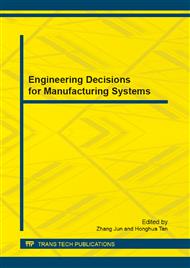p.106
p.112
p.118
p.122
p.127
p.132
p.137
p.141
p.146
Influence of the Top Metal Electrode on P-V Hysteresis Loops Behavior of 1-μm Thick PZT Films Deposited on a Pt/TiN/Si Substrate Prepared by MOCVD
Abstract:
The effect of various top electrodes (Au, Ag, Cu and Al) on the hysteresis loop behavior of 1-μm thick PZT has been investigated. The PZT films and PT bottom electrode were prepared by MOCVD, and various top electrodes were deposited by evaporation. Using an Ag and Cu top electrode, an improvement in the polarization hysteresis loops of PZT films was observed compared to the other electrodes (Au and Al). A well-saturated P-V hysteresis loop was obtained when Ag and Cu top electrodes were applied. By applying an Au electrode, a decrease in polarization was observed, and the Al top electrode produced P-V hysteresis loops with para-electric behavior. The improvement in the polarization hysteresis loops was affected by the electrical conductivity of the top metal electrode. Namely, a faster supply of compensation charges, which are required to bind polarization charges located near the interface in PZT films, was obtained as the conductivity of the top electrode increased. The electrical conductivity of the metals displayed the following trend: (Ag>Cu>Au>Al).
Info:
Periodical:
Pages:
127-131
Citation:
Online since:
September 2013
Authors:
Keywords:
Permissions:
Share:
Citation:


